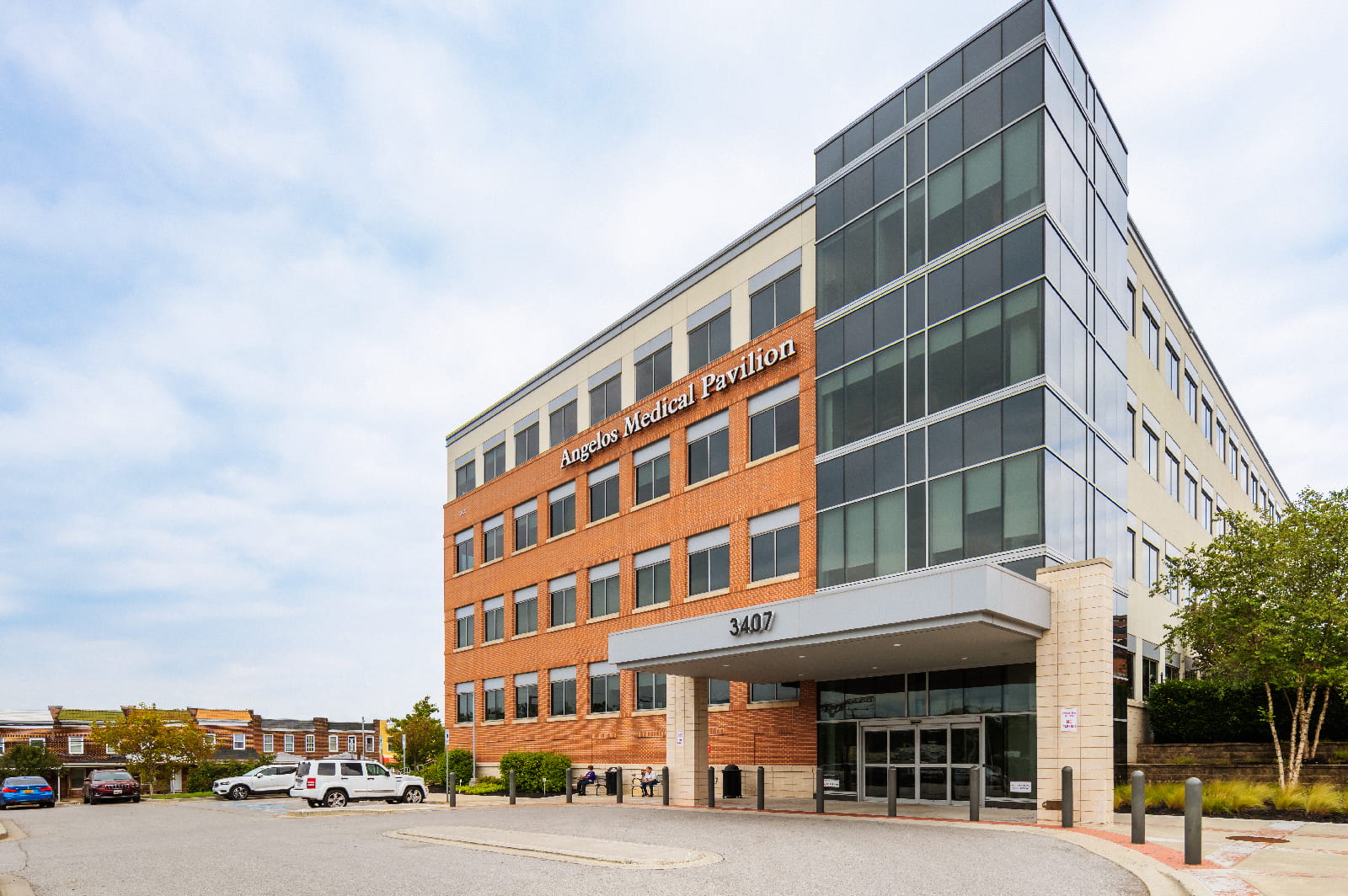
Locations
Ascension Saint Agnes Heart Care
- Cardiology
Hours
Monday: 7 a.m. - 5 p.m.
Tuesday: 7 a.m. - 8 p.m.
Wednesday: 7 a.m. - 5 p.m.
Thursday: 7 a.m. - 5 p.m.
Friday: 7 a.m. - 5 p.m.
Saturday: Closed
Sunday: Closed
Appointments
Cardiovascular Services
Ascension Saint Agnes Heart Care provides a full range of care, including prevention screenings, diagnostic evaluations, tests and treatments.
Diagnostic services and tests include:
- EKG and Holter monitoring: An electrocardiogram (EKG/ECG) measures the electrical activity of the heart. Electrodes placed on the arms, legs and chest provide information about the body’s electrical activity. The test measures damage to the heart, how fast the heart is beating, the effects of drugs or devices used to control the heart and the size and position of the heart chambers. Electrodes are attached by wires to an in-office machine or a Holter Monitor, a machine worn by patients for 24 to 48 hours that records heart rhythms.
- Stress and nuclear stress testing: A stress test, also known as an exercise stress test, provides information about how well the heart works during physical activity. It involves walking on a treadmill or riding a stationary bike while heart rhythm, blood pressure and breathing are monitored. A nuclear stress test measures blood flow to the heart muscle at rest and during stress on the heart. Like a routine stress test, it is performed during exercise. But, nuclear stress tests involve taking two sets of heart images to determine areas of low blood flow through the heart and damaged heart muscle.
- Echocardiogram and stress echocardiogram: An echocardiogram uses sound waves to produce heart images. This test shows your doctor physicians how your heart is beating and pumping blood and can help identify abnormalities in your heart muscle and valves. During a stress echocardiogram, a resting echocardiogram is usually done first. Then, you walk on a treadmill or ride a stationary bike so your doctor can capture images while your the heart rate is increasing. The results will show if parts of your heart don’t work as well when your heart rate jumps.
- Pacemaker and defibrillation evaluation: A pacemaker is a small electrical device implanted in the body to control abnormal heart rhythms, or arrhythmias. By using electrical pulses, it can prompt the heart to beat at a normal rate. It can also speed up or slow down a heart rhythm. An implantable cardioverter defibrillator (ICD) is also a small, electrical device that monitors and helps regulate heart rates and rhythms. If rhythms become dangerous, the ICD delivers shocks – a process known as defibrillation – to stabilize the rhythms. Most new ICDs work as pacemakers and defibrillators. During evaluation, your doctor makes sure the device is working properly. Physicians also assess any arrhythmias you may have had and therapy delivered by the device.
: Cardiac catheterization is a procedure used to both diagnose and treat heart conditions. Cardiologists place a long, thin tube known as a catheter into a blood vessel in your arm, groin or neck and thread it toward the heart. As a diagnostic tool, catheterization can show any plaque that has accumulated in a patient’s coronary arteries. This plaque buildup is called coronary heart disease or coronary artery disease.
Treatments and procedures include:
- Cardiac catheterization (coronary artery angioplasty and stenting): Physicians can also use cardiac catheterization to treat coronary artery disease. During a procedure known as angioplasty, physicians thread a catheter with a balloon at its tip to the blocked artery. Then, physicians inflate the balloon to push plaque against the artery wall and create a path for blood flow to the heart. At times, physicians place a stent, or a small mesh tube, in the artery during angioplasty to provide support. Cardiac catheterization can also be used in emergencies to treat a heart attack. When combined with angioplasty, it allows physicians to open blocked arteries and potentially prevent additional heart damage.
- Radial angioplasty: A radial approach to angioplasty allows physicians to insert a catheter into the radial artery, a branch of the brachial artery that runs around the wrist. By entering through the wrist, physicians are closer to the heart.
- Pacemaker and defibrillator implantation: Physicians implant pacemakers and defibrillators in hospital settings, usually in cardiac catheterization labs. During the procedure, physicians make a small incision in the chest and then insert the device, connecting wires with electrodes to the heart muscle.
- Ablation Procedures: Ablation procedures treat abnormal heart rhythms. They can be performed surgically or non-surgically for conditions like atrial fibrillation, the most common type of abnormal heart rhythm, and ventricular tachycardia, a fast heart rhythm that originates in a heart ventricle.
- Transesophageal Echocardiogram: This type of echocardiogram can help guide physicians during cardiac catheterization or assess a patient’s status during or after surgery. By guiding a probe through the throat and toward the esophagus, physicians can obtain more detailed images of the heart and its blood vessels.